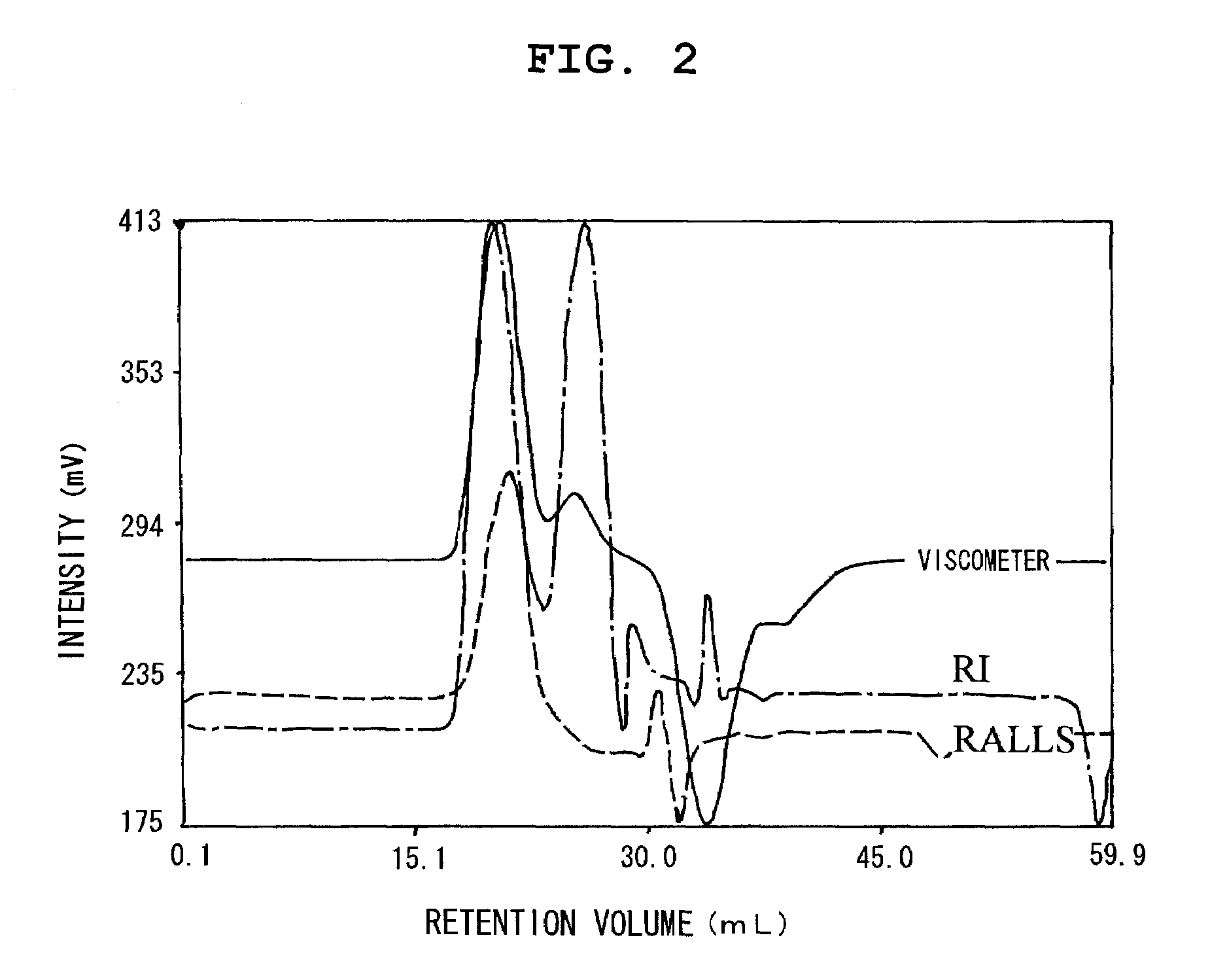Toner with specified amounts of the THF-soluble matter having certain intrinsic viscosity
a technology of intrinsic viscosity and toner, which is applied in the field of toner, can solve the problems of contaminating the fixing sheet, facilitating the shortening of the life of the fixing roller, and detachment between, and achieves excellent low-temperature fixability, excellent developability, and the effect of preventing a frameless printing
- Summary
- Abstract
- Description
- Claims
- Application Information
AI Technical Summary
Benefits of technology
Problems solved by technology
Method used
Image
Examples
example 1
Preparation of Toner No. 1
[0168]
Binder Resin 170 parts by massBinder Resin 1030 parts by massMagnetic iron oxide particles a (average particle size90 parts by massof 0.14 μm, Hc (magnetic resistance) = 11.5 kA / m,σs (saturation magnetization) = 90 Am2 / kg,σr (residual magnetization) = 16 Am2 / kg)Charge control agent-1(intrinsic viscosity of 1.5 × 104: 2 parts by mass2.5 × 10−1 dl / g, Mw: 27,000, Tg: 76° C.,acid number: 25 mgKOH / g)
[0169]After pre-mixing the above materials by a Henschel mixer, melt kneading was carried out using a biaxial kneading extruder. At this time, a holding time was controlled so that the temperature of the kneaded resin could reach 150° C. The resulting kneaded product was cooled and then roughly pulverized by a hammer mill, followed by further pulverizing by a turbo mill. The resulting pulverized fine powders were classified using a multi-division classifier utilizing the Coanda effect (Elbojet Classifier, manufactured by Nittetsuko K.K.), thereby obtaining tone...
examples 2 to 12
Preparation of Toner No. 2 to No. 12
[0206]Toners No. 2 to No. 12 were prepared in a manner similar to Example 1 with the formulations described in Table 5. The toner was evaluated by the same way as that of Example 1. The physical property values of the toner thus obtained are shown in Table 6 and the evaluation results are shown in Table 7.
example 13
Preparation of Toner No. 13
[0207]
Binder Resin 120 parts by massBinder Resin 1080 parts by massCharge control agent-2 2 parts by massCarbon black 5 parts by mass
[0208]Toner No. 13 was prepared by the same way as that of Example 1 except that the formulation of toner particles was changed as described above. The evaluation of toner was carried out in a manner as that of Example 1. The obtained physical property values of toner are shown in Table 6 and the evaluation results are shown in Table 7.
[0209]Further, the evaluation of a YMCK full-color one component development was carried out with the use of: magenta toner (M) using pigment red 57 instead of carbon black in the preparation of toner No. 13; yellow toner (Y) using pigment yellow 74 instead of carbon black in the preparation of toner No. 13; cyan toner (C) using pigment blue 15:3 instead of carbon black in the preparation of toner No. 13; and toner No. 13 (K). Each color toner showed good results with respect to the above evalu...
PUM
| Property | Measurement | Unit |
|---|---|---|
| Tg | aaaaa | aaaaa |
| Tg | aaaaa | aaaaa |
| Tg | aaaaa | aaaaa |
Abstract
Description
Claims
Application Information
 Login to View More
Login to View More - R&D
- Intellectual Property
- Life Sciences
- Materials
- Tech Scout
- Unparalleled Data Quality
- Higher Quality Content
- 60% Fewer Hallucinations
Browse by: Latest US Patents, China's latest patents, Technical Efficacy Thesaurus, Application Domain, Technology Topic, Popular Technical Reports.
© 2025 PatSnap. All rights reserved.Legal|Privacy policy|Modern Slavery Act Transparency Statement|Sitemap|About US| Contact US: help@patsnap.com



